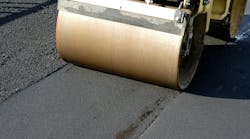Lots and Lots of Parking Lots
Part 1 of this article was featured in the January/February issue of SWS.
Now let us shift focus and look further into the parking lot design issue. As mentioned in Part 1, it has some low-hanging fruit, or relatively easy solutions, for storm water managers.
Typical parking lots tend to house too many spaces, provide spaces that are larger than necessary and have insufficient layouts when considering total impervious surface coverage. In many places, wide aisles, copious use of curbs and raised landscape islands are still the standard. Minor modifications to codes governing stall size, parking lot layout and landscaping can significantly reduce impervious surfaces and direct runoff to pervious areas for onsite treatment, providing substantial water quality benefits.
Onsite Management
Planning to manage at least a portion of storm water that falls on a building and its parking lot is not a difficult design challenge. Cities can adopt ordinances for new development that require the infiltration of the first inch of rainfall. In many parts of the country, this will result in about a 90 percent reduction in the total volume of storm water leaving a site annually.
A number of development codes specify that landscaped areas be included in parking lot designs. Typically, 5 to 10 percent of the total lot area is devoted to setbacks and landscape islands, according to a 1995 study conducted by the Center for Watershed Protection. Unfortunately, many codes require the use of islands for landscaping amenities; these islands are raised or mounded above the pavement and fortified by surrounding curbs that direct storm water away.
Using established “green” infrastructure or low-impact development techniques, such as rain gardens, bioretention cells, infiltration trenches (note that these techniques require dirt to be lower than the pavement) and porous pavements, to accept and infiltrate storm water can dramatically reduce the volume of runoff and associated pollutant loads. These green practices rely on natural processes in the soil and vegetation to capture, infiltrate, evapotranspirate and treat storm runoff.
These features must be designed and engineered to handle the estimated runoff from parking areas and buildings. In some cases, soil might need amending to ensure adequate infiltration and treatment. Vehicles can be excluded from landscaped areas using tire stops or curbs with cuts that allow rainfall to flow into the landscaped area.
Lowering the level of dirt and using storm water to irrigate trees, plants and grasses conserves water and lowers utility costs.
Parking Stall Size
Parking lot impervious surfaces can be broken down into five parts: the parking stall; the curb; the overhang; the parking aisle; and shared imperviousness, including fire lanes, entrances and exits and internal feeder roads. Oversized parking stalls contribute to excess imperviousness.
Figure 1 shows the range of square footage for regular, compact, handicapped and on-street parking stalls. One myth surrounding parking lot design is that spaces need to be oversized to accommodate SUVs and minivans, when in fact even moderately sized stalls accommodate these vehicles, according to the Center for Watershed Protection.
Researcher Thomas Schueler, whose 1995 study Figure 1 was adapted from, estimated that substituting compact stalls, which average a 30 percent smaller size than standard stalls, for 30 percent of regular stalls could reduce total parking lot impervious area by 10 to 15 percent. Even adopting parking stall sizes on the lower end of the ranges shown in Figure 1 can reduce impervious surfaces by 5 to 10 percent.
Lot Layout
The width of the parking aisle is dictated by the type of traffic, one-way or two-way, and the orientation of parking spots. Aisles must be wider for two-way traffic and perpendicular stalls. Total impervious surface can be reduced by opting for one-way aisles with angled parking stalls; vehicles need less room to maneuver in and out of spaces in this design. Reducing the width of the aisles from 24 to 18 ft can reduce the parking lot’s impervious cover by 5 to 10 percent.
Pavement Options
Permeable pavements can infiltrate rainwater and treat runoff from adjacent impervious areas. Some permeable pavement options are not well-suited for high-traffic areas or those frequented by heavy vehicles, but aisles can be sloped so that runoff is directed to permeable surfaces. Furthermore, overflow areas can be paved with gravel or grass, both of which increase permeability and reduce construction costs.
New Development vs. Retrofits
In urban areas that are already built out, it might not be feasible to address storm water runoff concerns using the same standards that apply to new development. Nonetheless, there are many opportunities to apply green practices to existing developments through retrofitting. Parking lot retrofit opportunities can present themselves at any time but are particularly appropriate when parking areas need repair or replacement.
The city of Bellingham, Wash., undertook a pilot study to retrofit two parking lots with rain gardens in lieu of installing expansive underground vaults for managing storm water. Work crews converted 550 sq ft of the Blodel Donovan Park parking lot to a rain garden from 80 parking spaces and two parking aisles. The project cost $12,800. At its city hall, the city invested another $5,600 in converting three of the 60 parking spaces into a rain garden.
Such modifications are more expensive than simply repaving a lot, but regulatory requirements and financial incentives (i.e., a storm water fee discount and the marketability of a green business ethic) can provide the impetus for progressive parking lot retrofits.
In Conclusion
Communities across the U.S. must manage acres upon acres of parking that generate pollutants, increase runoff and affect local character and accessibility. In developing areas, storm water managers, city planners and developers can play a role in solving the myriad of problems associated with oversized and ill-designed parking lots.
If one or a few of the options described in this article—assessing realistic demand, revising codes to eliminate parking minimums, choosing designs that lessen impervious surfaces, incorporating storm water features into landscaping, retrofitting existing parking areas—are implemented, the result will be a net gain for cleaner water and more livable communities.
Download: Here

